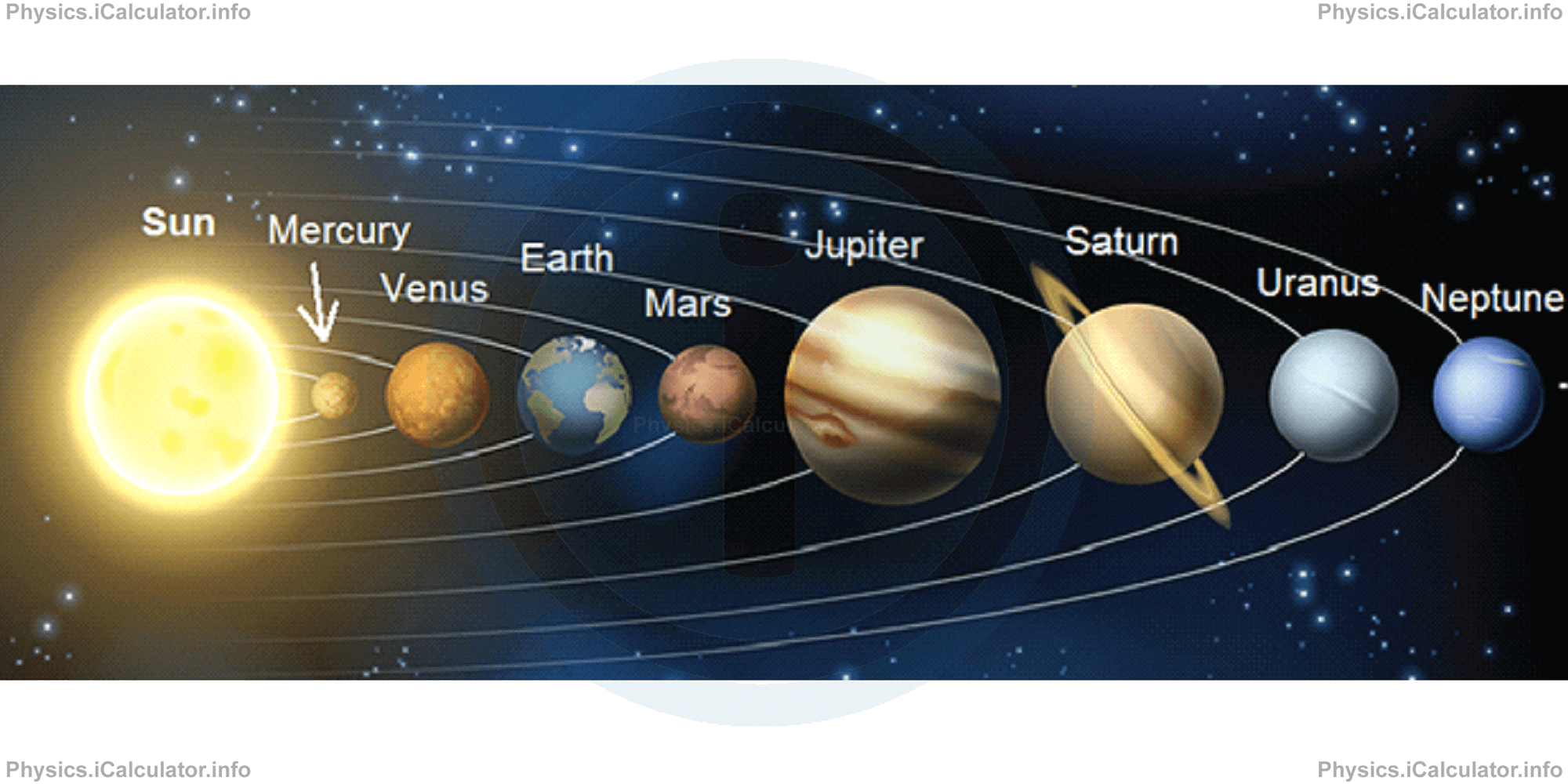Menu
Physics Lesson 22.1.2 - Earth and Planets
Please provide a rating, it takes seconds and helps us to keep this resource free for all to use
Welcome to our Physics lesson on Earth and Planets, this is the second lesson of our suite of physics lessons covering the topic of Earth and Other Celestial Bodies, you can find links to the other lessons within this tutorial and access additional physics learning resources below this lesson.
Earth and Planets
Planets are big spherical-shaped celestial bodies that revolve around the Sun. The trajectory of planets is known as their orbit and each orbit has an elliptic shape. In other words, the orbit represents the path followed by a planet during their revolution around the Sun. Planets are visible because they reflect the light incident from the Sun. In ancient times, people were able to identify six planets: Mercury, Venus, Mars, Jupiter, Saturn and obviously, the Earth. The other two planets, Uranus and Neptune were discovered in recent centuries as well as Pluto, which until a few years ago was considered as a planet but now it is not classified as such anymore due to its small dimensions. The following figure represents a simplified illustration of the solar system.

All planets of the solar system have been explored using space probes. However, humans have not been able to physically travel to any of them due to the large distance and technical difficulties though there are asperations for humans to travel to the planets within our solar system and beyond once technological advances permit this..
You have reached the end of Physics lesson 22.1.2 Earth and Planets. There are 6 lessons in this physics tutorial covering Earth and Other Celestial Bodies, you can access all the lessons from this tutorial below.
More Earth and Other Celestial Bodies Lessons and Learning Resources
Whats next?
Enjoy the "Earth and Planets" physics lesson? People who liked the "Earth and Other Celestial Bodies lesson found the following resources useful:
- Earth Feedback. Helps other - Leave a rating for this earth (see below)
- Cosmology Physics tutorial: Earth and Other Celestial Bodies. Read the Earth and Other Celestial Bodies physics tutorial and build your physics knowledge of Cosmology
- Cosmology Revision Notes: Earth and Other Celestial Bodies. Print the notes so you can revise the key points covered in the physics tutorial for Earth and Other Celestial Bodies
- Cosmology Practice Questions: Earth and Other Celestial Bodies. Test and improve your knowledge of Earth and Other Celestial Bodies with example questins and answers
- Check your calculations for Cosmology questions with our excellent Cosmology calculators which contain full equations and calculations clearly displayed line by line. See the Cosmology Calculators by iCalculator™ below.
- Continuing learning cosmology - read our next physics tutorial: Sun and Planetary Motion
Help others Learning Physics just like you
Please provide a rating, it takes seconds and helps us to keep this resource free for all to use
We hope you found this Physics lesson "Earth and Other Celestial Bodies" useful. If you did it would be great if you could spare the time to rate this physics lesson (simply click on the number of stars that match your assessment of this physics learning aide) and/or share on social media, this helps us identify popular tutorials and calculators and expand our free learning resources to support our users around the world have free access to expand their knowledge of physics and other disciplines.